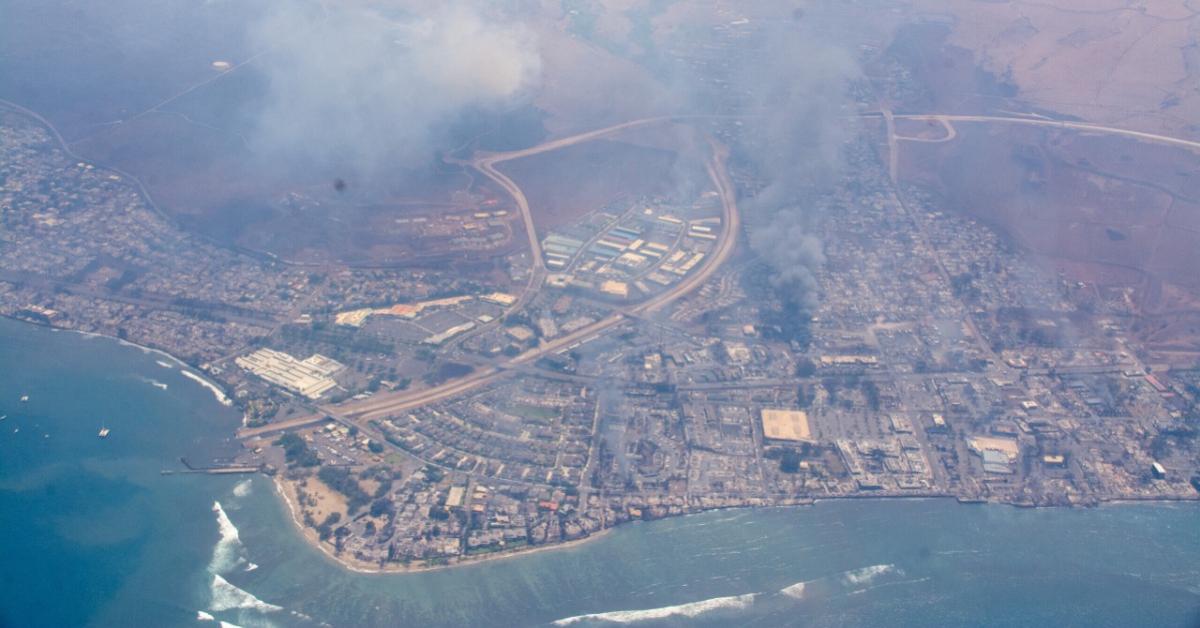The most destructive natural disasters are never 100 percent natural. Human choices, land use, and government policies play a big role in how harmful hurricanes, tornadoes, earthquakes, flash floods, and wildfires are to the affected communities.
And after catastrophes like the wildfire that destroyed much of the historic Hawaiian city of Lahaina last week, it’s worth taking stock of how much of the disaster was the result not of natural or accidental factors, but of policies and institutions that can be changed.
Though details are still emerging, it’s becoming clear that government failure did much to make this disaster worse—and possibly even started it. While the so-called experts are blaming climate change—and in the process demanding that government grab even more power and authority ostensibly to someday give us better weather—the destructiveness this fire was the product of an all-powerful and all-incompetent régime.
The specific origins of the fire are still being investigated, but there is much we already know. The city of Lahaina sits on the west coast of Maui, Hawaii’s second-largest island. It is surrounded by grassland, much of which the state owns.
Nearly a decade ago the Hawaii Wildfire Management Organization, a research nonprofit, warned the Hawaiian government that the area around Lahaina was extremely fire-prone due to frequent downslope winds, steep terrain, and dry grass. Little was done to address these risks. A subsequent report in 2020 added that an invasive species of exceptionally flammable grass was prevalent in the surrounding fields and that passing hurricanes created strong winds known to fuel wildfires on the islands.
Early last week, Hurricane Dora crossed the ocean south of Hawaii. By early Tuesday morning, August 8, winds as fast as sixty miles per hour were blowing down the slopes of the West Maui Mountains into Lahaina. Around sunrise, a large fault was detected in the power grid, indicating a downed power line. Twenty minutes later, the first reports of fire came in from the area around Lahainaluna Road, uphill and upwind from the city.
The area where flames were first spotted is full of electrical infrastructure, mostly operated by Hawaiian Electric, the state’s monopoly electricity supplier. This included a substation and a multitude of power lines. Most of the land in the area is owned by the State of Hawaii except for a parcel belonging to the estate of one of Hawaii’s last princesses. This parcel housed a solar farm supplying electricity to the Hawaiian Electric substation. Early last year, NPR published a glowing article about the solar project, praising it the direct result of government regulation crafted to help transition Hawaii to 100 percent renewable power by 2045.
But on the morning of August 8, as winds hammered the old wooden utility poles, this highly electrified area in the dry grasses above Lahaina was quickly becoming dangerous. Yet no formal procedure was in place to shut off sections of the grid in the face of severe fire risks. As a result, twenty-nine fully energized poles fell across West Maui that day.
But even with downed poles in the way, the first firefighters on the scene met with some early success. Around 9 a.m., the county fire department declared the fire “100 percent contained.” But the message to residents included an ominous request. The county’s water pumps were powered by electricity, much of which was frantically being turned off to deactivate the downed lines. Officials asked the public to conserve water to preserve water pressure.
But by midafternoon, a flare-up brought the fire back to life on the Lahaina Bypass, a major road that heads straight into town. The flames moved swiftly into Lahaina at 4:46 p.m., one minute after the county government finally sent out an alert to warn the city’s population, largely without power, about the flare-up that had occurred over an hour before.
To make matters worse, county officials failed to activate emergency sirens, leaving residents unaware of the danger bearing down on them. And as firefighters heroically rushed toward the flames to try and save their community, they found that there was little to no water pressure in the fire hydrants, which quickly ran dry.
With a single backed-up highway leading out of the city, many residents of Lahaina had nowhere to go. Some scrambled into the ocean to escape the smoke and flames. But in the end, many couldn’t get out. At least ninety-nine people have been confirmed dead at this writing, making this the deadliest American wildfire in over a century. In addition, 2,207 buildings were destroyed, with property damages expected to reach $5.5 billion.
To review, a power company shielded from competition by the state placed electrical infrastructure among highly flammable state-owned grass fields above the historic city of Lahaina, which the government was twice warned were highly susceptible to fire. And once a fire broke out, a combination of defective water infrastructure, terrible communication by government officials, and only one escape route doomed the people of Lahaina to the worst wildfire experienced in this country in over a hundred years.
This was government failure through and through. In Human Action, Ludwig von Mises explains that on the market, the ultimate source of profits is foresight—the ability to anticipate future conditions. And economic loss occurs when market actors fail to anticipate the future. This possibility of riches if one succeeds, and the guarantee of painful failures if one doesn’t, forces producers and service providers on the market to constantly weigh risks and opportunities.
Government immunizes itself from the profit and loss system, and therefore from much of the need to weigh risk. Sure, some county officials may resign because of this. And the share price of Hawaiian Electric may dip. But the people of Maui will be forced to keep compensating the very organizations that have failed them. And there’s nothing natural about that disaster.




